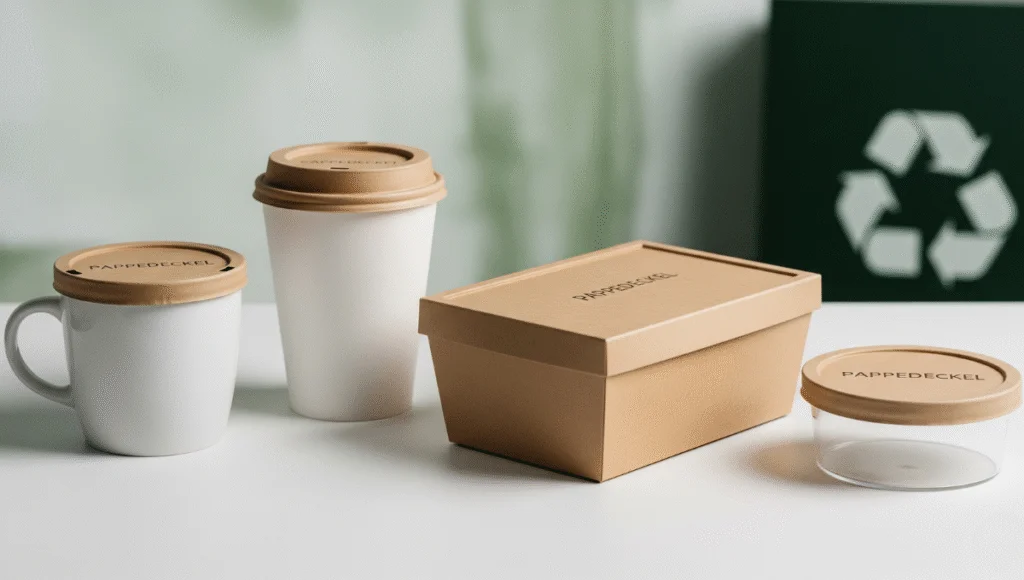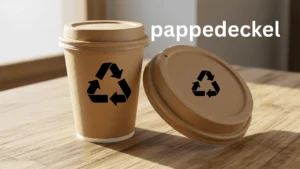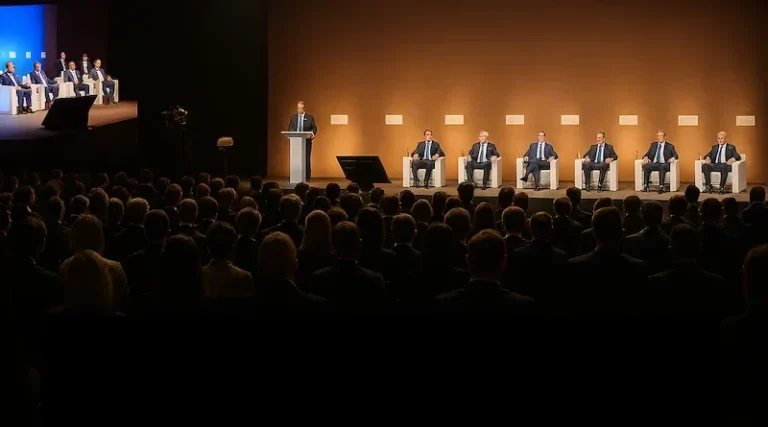
What is Pappedeckel?
Pappedeckel, a term that may be unfamiliar to some, refers to a specific type of paper lid typically used to cover containers, particularly in the food and beverage industries. The word is derived from German, where “Pappe” means cardboard or paperboard, and “Deckel” translates to lid. This craft form highlights the utilitarian and aesthetic aspects of packaging, combining functionality with design.
The origins of pappedeckel can be traced back to traditional German paper crafts, where artisans developed various techniques for manipulating paper materials. Initially, these lids were crafted by hand, but as demand grew, especially during the mid-20th century, mechanized processes began to take over. Today, pappedeckel is commonly made from recycled paper or cardboard, emphasizing sustainability while maintaining quality and durability. The eco-friendly nature of the materials used in pappedeckel is a crucial factor in its increasing popularity, reflecting a broader trend towards environmental consciousness in packaging solutions.
Various techniques are employed to create pappedeckel, including die-cutting, embossing, and printing. These methods not only enhance the visual appeal but also ensure that the lids fit snugly on their respective containers, preventing leaks or spills. Pappedeckel can be found in various shapes and sizes, making it an adaptable option for different products, ranging from takeout containers to beverages.
The significance of pappedeckel extends beyond its practical uses; it often serves as a branding opportunity for businesses. Custom designs and printed logos on these lids can transform a simple product into a memorable experience for customers. In summary, pappedeckel embodies a unique intersection of craft, industry, and branding, firmly establishing its value in today’s market.
The Crafting Process of Pappedeckel
The unique art of crafting pappedeckel, a traditional German paper-based craft, requires patience, creativity, and the right materials. To begin, one must gather several essential materials, including high-quality paper—often recycled or decorative paper—scissors, adhesive glue, and decorative elements such as ribbons or stickers. Depending on the desired final product, a paper cutter can also be beneficial for precision. Specialized tools such as bone folders may assist in achieving clean folds and crisp edges.
Once the materials are assembled, the crafting process typically starts with cutting the paper into the desired shapes and sizes. A common approach is to create a basic template that serves as a guide for consistent dimensions. After cutting, the next step involves folding the paper according to the intended design, which could range from simple to intricate structures. This stage is where a good understanding of the pappedeckel technique is crucial, as the folding is pivotal in achieving the desired stability and style.
Adhesion is the next critical component. Using a suitable glue, one should secure the folded parts together, ensuring that they are aligned correctly to maintain the integrity of the design. During this phase, crafters often encounter challenges, such as ensuring that all parts adhere firmly without excess glue seeping out. To overcome this, applying glue sparingly and using clamps or weights can help stabilize the assembly until it dries. Creative individuals may also explore embellishing their pappedeckel creations with additional decorative elements, adding a unique flair to each piece.
In conclusion, while the crafting of pappedeckel is a rewarding venture that invites creativity, it requires attention to detail and some practice to master the various techniques encountered along the way.

Applications and Uses of Pappedeckel
Pappedeckel, a versatile material primarily known for its lightweight and durable properties, has found its place in various fields, ranging from arts and crafts to packaging solutions. In the realm of arts and crafts, pappedeckel is often employed as a medium for creating intricate designs and structures. Craft enthusiasts appreciate it for allowing detailed and innovative projects. For instance, artists utilize pappedeckel sheets in making decorative ornaments, customized gift boxes, and unique home decor items, facilitating an immense range of creativity.
Moreover, pappedeckel holds significance in the packaging industry, where it is used for producing attractive, eco-friendly packaging options. With the increasing demand for sustainable materials, pappedeckel has emerged as an excellent choice for packaging goods due to its recyclability. Businesses have begun adopting pappedeckel for items such as product sleeves, unique take-out containers, and promotional materials, thus highlighting its functionality and aesthetic potential.
In addition, the decorative aspect of pappedeckel cannot be overlooked. It is frequently utilized in scrapbooking, card making, and other DIY projects, where crafters use it to enhance visual appeal. Pappedeckel can be painted, printed on, or even layered, providing numerous possibilities for customization. Some have taken it a step further by creating jewelry pieces, such as earrings and necklaces, that showcase the material’s creative potential.
Real-world applications of pappedeckel illustrate its integral role in contemporary crafting and DIY culture. With its easy availability and adaptability, this material encourages creative exploration, making it a beloved choice among hobbyists and professional crafters alike. The appeal of pappedeckel in various applications ensures its continued relevance in evolving crafting practices.
Benefits and Sustainability of Pappedeckel
Pappedeckel, known for its unique attributes, has been gaining attention not only in the crafting community but also among environmentally conscious consumers. One of the most significant benefits of utilizing pappedeckel is its ecological footprint. Crafted primarily from recycled materials, pappedeckel promotes sustainable practices by reducing waste and encouraging the use of renewable resources. This aligns perfectly with the growing trend toward eco-friendly crafting techniques that emphasize the importance of minimizing environmental impact.
Beyond its sustainability, pappedeckel offers a plethora of practical advantages that enhance its appeal in various projects. One of its most notable characteristics is its aesthetic versatility, allowing crafters to explore their creativity without limitations. Pappedeckel can easily be customized, painted, or adorned, making it an ideal choice for both simple and intricate designs. Its availability in different textures and finishes provides an array of options that suit diverse artistic preferences, enriching the crafting experience.
Another key benefit of using pappedeckel concerns its durability. It is designed to withstand wear and tear, ensuring that finished projects maintain their integrity over time. This makes it an excellent choice for items intended for everyday use, such as storage solutions or decorative pieces. Furthermore, the ease of use associated with pappedeckel is paramount for both novice and experienced crafters alike. Its lightweight nature and straightforward handling enable quick assembly, making projects more accessible and enjoyable.
As crafting continues to evolve, integrating pappedeckel into various artworks not only enhances aesthetic appeal and practicality but also supports a more sustainable creative approach. With these combined benefits, it is clear that exploring the world of pappedeckel could be a rewarding venture for anyone interested in crafting.


